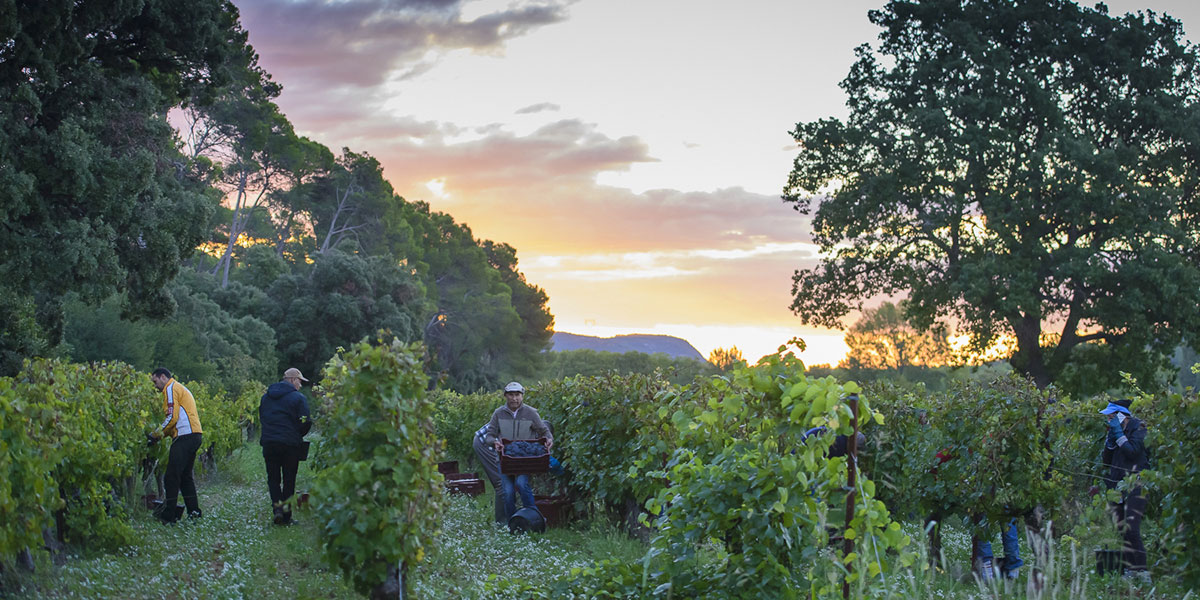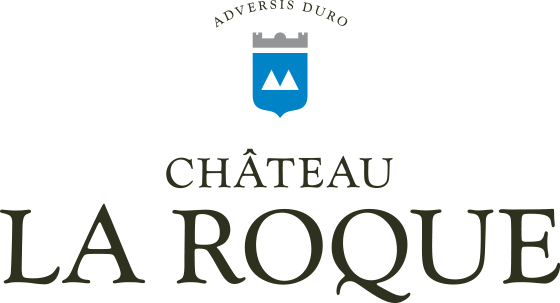Every day
Every day, our team manages work on the vines and the wine. The diversity of grape varieties, plots and élevages, makes this work very lively and pleasant.

The vine needs time, patience and love for it to give of its best.
The estate’s production is totally managed through green operations carried out in spring (disbudding, thinning of secondary shoots). In terms of yield and taking into account the differences of planting density on the estate, the target is around 1 kg of grapes per vine stock, or around 1 bottle per plant.
The vines are trained in two different ways; as single or double Royat cordons or goblets for the very old Grenache plots in the estate. In both cases, we carry out a short pruning.
Harvesting is carried out entirely by hand, using shallow trays, with a 36 hour spell in a cold room before pressing (for white wines and rosés) or vatting with total or partial destemming (for red wines).
Red grape varieties
These account for 80% of the vineyard; the first plots were planted in 1957 at a density of 6,000 vine stocks per hectare. The vines are around 30 years old on average, and consist of the following:
Syrah
“Syrah is a fragile grape variety, which dislikes drought and is susceptible to disease. Its long branches have little resistance to the Mistral, which is why they are often tied or cut short. It needs soils which are rich in trace elements in order to thrive. Under these conditions, it produces bunches of a beautiful bluish black colour, with average size berries and a sweet spicy juice”.
55%, on lower slopes and at breaks in slopes, on moderately deep soil, with a southerly/south-easterly aspect.
Mourvèdre
“Our star grape variety. Mourvèdre is delicate, and generally trained into goblets. Its fertility is rather irregular and its yield has to be small so that its rootstocks aren’t quickly exhausted”.
25% on slopes (mid-way) on clay and limestone, with a southerly aspect.
Grenache
“Planted in dry and stony soils, it is very suitable for the south of France area, and its bunches, which are fairly thick with grapes, produce a very sweet juice. It is the backbone of south of France wine blends…”
20%, on slopes (high up) on hard limestone, with a south-easterly aspect.
White grape varieties
These account for 20% of the vineyard; the first plots were planted in 1985 at a density of 6,000 vine stocks per hectare. The vines are around 20 years old on average.
Rolle
“A grape variety of Turkish origin which became established in the Midi, in particular in the Var and in Corsica under the name of Vermentinu, and in Italy. Its bunches and its berries are average in size, changing from white to pink in colour when the grape is ripe. Rolle loves hot climates where soils are dry and poor. On the other hand, it dislikes wind and is susceptible to disease. It produces rich, well-balanced white wines”.
Marsanne
“A hot and sunny climate and dry stony soils are the perfect conditions for it to develop well. It produces fairly large bunches with small, very juicy berries, which are susceptible to grey mould and strong winds. Marsanne is often blended with Roussanne. These two grape varieties complement each other perfectly”.
Roussanne
“This grape variety bears cylindrical bunches, with rather small berries which become russet when mature. Wine produced from Roussane grapes alone is of an extraordinary quality. It releases a delicate aroma reminiscent of coffee, honeysuckle, irises and peonies”.
White Grenache
“Its rather large bunches and its very juicy, sweet berries are average in size. White Grenache withstands drought well and particularly likes dry gravelly or stony soils. It produces a large yield if it is pruned short, when it produces full-bodied and opulent white wines”.
20% Marsanne, 30% Rolle, 30% White Grenache and 20% Roussanne on lower slopes, on deeper soils with a southerly/south-easterly aspect (with the exception of one plot of Marsanne and one of Rolle on hard limestone).


